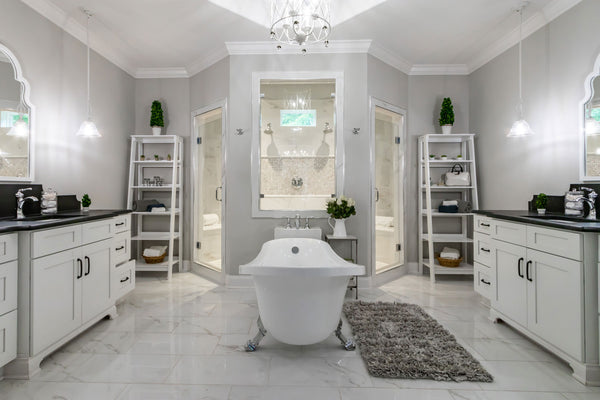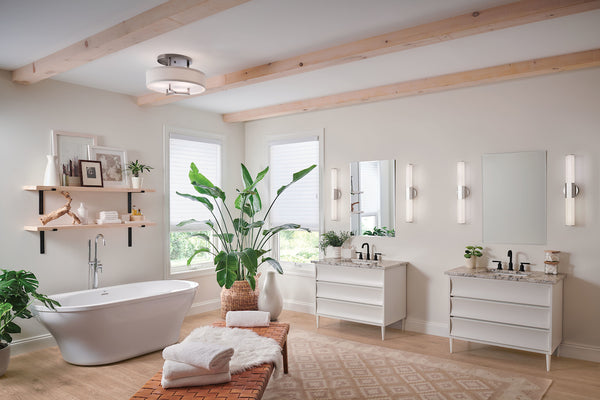On orders $99+
On orders $99+


The amount of lighting you need in your bathroom will depend on the size and layout of the room, as well as the type of activities you will be doing in the space. A general rule of thumb is to aim for a minimum of 75 watts of incandescent lighting per square foot, or equivalent for LED lighting in the bathroom. Additionally, it is important to have a mix of ambient, task, and accent lighting to provide a well-lit and functional space.
Bathroom lighting is an essential aspect of any bathroom renovation or design project. The right lighting can transform a functional space into a relaxing oasis, and it can also help to enhance the overall aesthetic of the room. However, choosing the right lighting fixtures and implementing them in a way that is both functional and visually pleasing can be a daunting task. In this article, we will explore the different types of lighting fixtures that are commonly used in bathrooms, and how interior designers typically implement them into their bathroom design.
The most common types of lighting fixtures used in bathrooms include recessed lighting, vanity lighting, pendant lighting, chandeliers, wall-mounted lighting, and ceiling-mounted lighting.
Interior designers typically use a combination of different types of lighting fixtures to create a well-lit and functional bathroom space. The specific placement and type of fixtures will depend on the size and layout of the bathroom, as well as the desired aesthetic. Recessed lighting can be used to provide ambient lighting and can be placed strategically throughout the bathroom to provide a well-lit space. Vanity lighting is typically placed above or on either side of the bathroom mirror to provide task lighting for grooming and makeup application. Pendant lighting can be used to provide accent lighting and can be placed over a bathtub or in a shower area to add a decorative touch. Chandeliers can provide ambient lighting and can be placed in larger bathrooms to serve as a focal point. Wall-mounted lighting can be used to provide task or accent lighting and can be placed on either side of a mirror or art piece. Ceiling-mounted lighting can be used to provide ambient lighting and can be placed in the center of the bathroom for general lighting.

Just to reiterate, it's important to keep in mind that the amount of lighting you need in your bathroom will depend on the size and layout of the room. You can use a general rule of thumb of aiming for a minimum of 75 watts of incandescent lighting per square foot, or equivalent for LED lighting in the bathroom.
When it comes to bathroom lighting, it's essential to work with an interior designer who can help you choose the right fixtures and implement them in a way that is both functional and visually pleasing. They will also take into account the color scheme and style of the bathroom, and will choose fixtures that complement the overall design aesthetic. They will also consider the position of the windows, natural light, and the different areas of the bathroom that require more or less light. With the right lighting fixtures and implementation, your bathroom can become not only functional but also a relaxing and inviting space.
Helpful Links:
Leave a comment